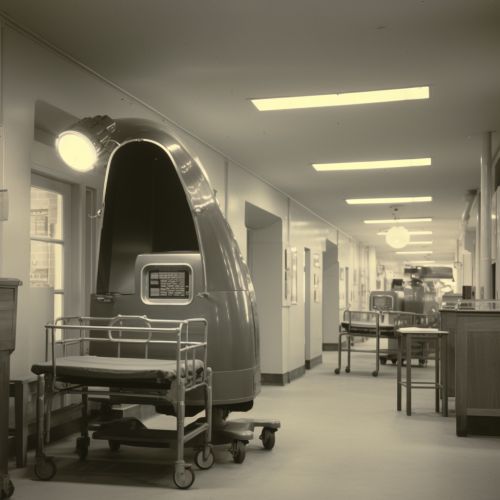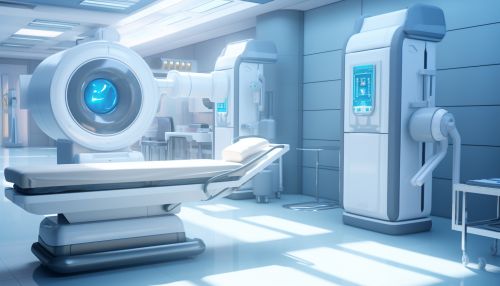X-ray Radiography
Introduction
X-ray radiography is a type of medical imaging technique that utilizes x-rays to visualize the internal structures of the body. This non-invasive procedure is commonly used in the medical field to diagnose and monitor various health conditions. It is a key tool in medical diagnostics, providing valuable information about the body's internal structures that cannot be seen with the naked eye.
History
The discovery of x-rays can be traced back to 1895, when German physicist Wilhelm Röntgen observed that a fluorescent screen in his lab started to glow even though it was not in direct contact with the cathode ray tube he was working with. This led to the discovery of a new type of ray, which he named 'X' for unknown. Röntgen's discovery revolutionized the field of medical imaging, and he was awarded the first Nobel Prize in Physics in 1901 for his work.
Principles of X-ray Radiography
X-ray radiography works on the principle of differential absorption. When x-ray photons pass through the body, they are absorbed by different tissues to varying degrees. Dense tissues such as bones absorb more x-rays and appear white on the resulting radiograph, while less dense tissues appear darker. The contrast between these different levels of absorption allows for the visualization of internal structures.


Types of X-ray Radiography
There are several types of x-ray radiography, each with its own specific uses and advantages.
Plain Radiography
Plain radiography, also known as projectional radiography, is the most common type of x-ray imaging. It is often used for the initial evaluation of diseases and injuries. Common applications include chest x-rays, bone x-rays, and abdominal x-rays.
Fluoroscopy
Fluoroscopy is a type of x-ray imaging that allows for real-time visualization of body structures. It is commonly used in procedures that require continuous imaging, such as angiography and barium studies.
Computed Tomography
Computed tomography (CT) is a type of x-ray imaging that uses a computer to create cross-sectional images of the body. CT scans provide more detailed information than conventional x-rays and are often used to diagnose and monitor conditions such as cancer and heart disease.
Safety and Risks
While x-ray radiography is a valuable diagnostic tool, it does involve exposure to ionizing radiation, which can potentially cause harm. However, the benefits of accurate diagnosis and treatment planning generally outweigh the risks. It is important for healthcare providers to use the lowest possible radiation dose to achieve the necessary diagnostic information.
Future Developments
Advancements in technology continue to improve the capabilities of x-ray radiography. Digital radiography, which allows for immediate image review and eliminates the need for film, is becoming increasingly common. Additionally, techniques such as dual-energy x-ray absorptiometry (DEXA) are being developed to provide more detailed information about bone density and body composition.
